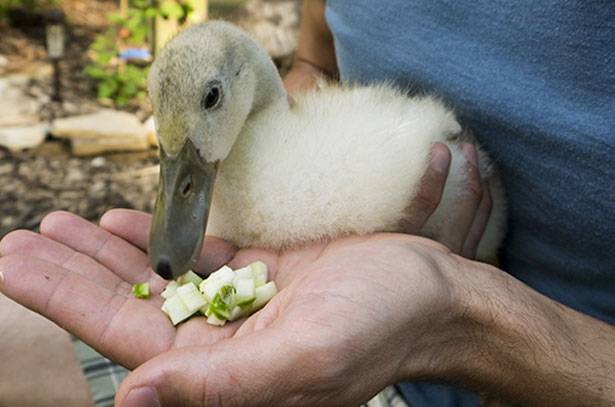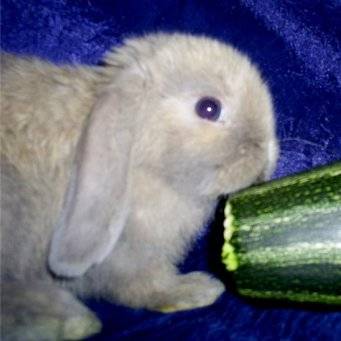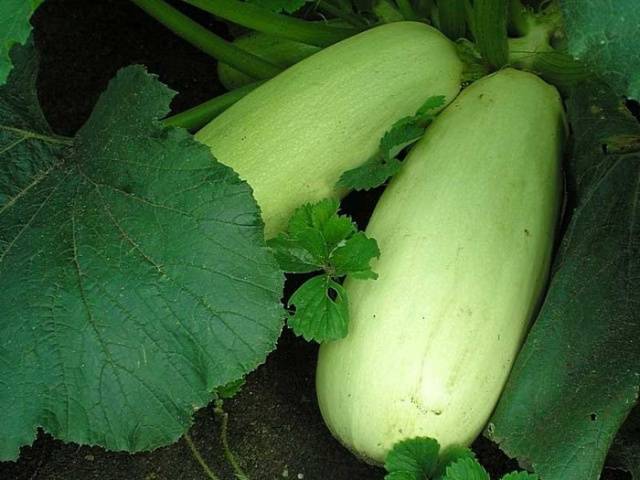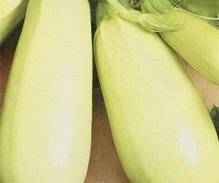Content
Zucchini is widely used not only for dining purposes, but also as animal feed. Fodder zucchini should have a record yield, but taste is not an important indicator for them. At the same time, farmers do not isolate individual varieties and sow high-yielding table varieties for these purposes. Since Soviet times, such varieties have been attributed to "Gribovsky", since its yield reached 80 t / ha. With the development of selection, other high-yielding, zoned zucchini appeared, the fruits of which animals can successfully consume. The article describes the most preferred varieties, the nutritional value of zucchini for livestock and poultry, and the peculiarities of cultivation.
Zucchini is a great feed
For animals, squash is a good, juicy feed. It is mainly included in the diet in the summer-autumn period, when the plant bears abundant fruit. However, zucchini can also be placed in a silo for storage, which allows you to feed the animals in the first half of winter. For this, stacks are formed with a laying of straw in the amount of 15-20% of the mass of stored zucchini.
Zucchini for animal feeding has no less nutritional value than beets or, for example, turnips. The juicy vegetable is highly digestible and promotes the digestion of other feeds. Fruits contain a balanced mix of feed units, dry matter and digestible protein.
Zucchini can be included in the diet of chickens, piglets, rabbits, ducks, turkeys. However, it is not recommended to use the vegetable as the main food, since it can act on the animal's body as a laxative.
High-yielding varieties of zucchini for feeding livestock
Zucchini has long been used as a fodder crop both in livestock farms and in private farmsteads. At the same time, preference is given to varieties with high yields and a significant proportion of dry matter in the pulp of the fruit. The most preferred varieties for feeding livestock are:
Gribovsky
This variety was grown in Soviet times on an industrial scale for feeding livestock. Preference was given to him due to unpretentiousness to weather conditions, resistance to diseases. It tolerates very well, including drought and low temperatures.
The variety is of average ripening period: the fruits ripen 45-50 days after sowing the seeds. The plant is bushy, vigorous. Its yield reaches 8 kg / m2.
The fruit of this variety is white, up to 20 cm long, weighing up to 1.3 kg. Its surface is smooth, cylindrical in shape. The pulp of the fruit is white, of medium density. The share of dry matter in the pulp is about 6%.
Belogor F1
An early ripe hybrid is great for forage harvesting. Its fruits ripen within 34-40 days after sowing the seeds. The proportion of dry matter in the pulp is 5.5%. The culture is unpretentious and adapted to weather disasters. The yield of the variety is very high - up to 17 kg / m2.
It is recommended to sow seeds of this variety from March to May, when night temperatures do not drop below +100C. The scheme of sowing seed into the ground involves the placement of 3 bushes per 1 m2 soil.
The fruits of this variety are cylindrical in shape and have a smooth surface, light green color. The pulp is dense and practically does not contain sugar. The average weight of one zucchini is 1 kg. The disadvantage of litter is coarse skin, which becomes woody as the vegetable ripens.
Sosnovsky
An early ripe zucchini variety.Its fruits ripen 45 days after sowing the seed. Differs in high yield up to 14 kg / m2... The disadvantage of the variety as a forage crop is its low dry matter content. At the same time, the fruits are sweet, juicy and can be an excellent addition to compound feed.
The variety is thermophilic, sown in May-June. Its bushes are compact, without lashes. Place the plant 4 pcs per 1m2 soil.
The shape of the squash is cylindrical. The peel is thin, white or beige. The pulp is fibrous, yellow. The average weight of the fetus is 1.6 kg.
Kuand
This variety of squash is a real find for farmers. Its yield reaches 23 kg / m2... The plant is unpretentious, perfectly adapted to the conditions of middle latitudes. True, the fruits ripen for a long time - 52-60 days. Sowing seeds is recommended in May.
The advantage of this type of zucchini is the high dry matter content in the pulp - 6%. The fruit has a cylindrical shape, light green color with bright green stripes. The surface of the vegetable is smooth. The length of the zucchini reaches 30 cm, weight 1.6 kg.
Iskander F1
The hybrid has a high yield up to 15.5 kg / m2... At the same time, its taste allows people to consume the vegetable, and even more so to feast on animals. The fruits of this zucchini are abundantly set even at low temperatures. The variety is early ripe: a little more than 40 days pass from the day of sowing to the first harvest. Zucchini was bred in Holland, but it grows well in domestic latitudes, it is resistant to many diseases. You can sow seeds in March-April. The bushes of the plant are compact, so it is recommended to place them at 4 pcs / m2.
Iskander F1 fruits are light green. Their skin is very thin, waxy. The length of the vegetable is up to 20 cm, the average weight is 640 g. The pulp is creamy, juicy, with a high sugar content.
You can hear the feedback from an experienced farmer about the yield of this variety and the suitability of its fruits for feeding livestock in the video:
Agrotechnics
The cultivation of fodder squash is not much different from the cultivation of table vegetables. So, for zucchini it is better to choose light soils on which legumes, potatoes, cabbage or onions were grown in the previous season. It is recommended to grow zucchini in temperate climatic zones by sowing seeds directly into the ground, in the northern regions it is possible to grow seedlings. Seed consumption for forage crops is 4-5 kg per 1 ha.
In the process of growing, zucchini need weeding and feeding mineral and organic fertilizers. Both immature and biologically mature squash are suitable for feeding animals. Harvesting begins in July and continues until the onset of frost.
Fodder zucchini can be kept fresh for some time in special rooms or silos. Optimal storage conditions are recognized: temperature +5 - + 100С, humidity 70%. Also, in private farmsteads, the dry harvesting method is used.
Zucchini is a grateful culture, unpretentious to growing conditions, does not require special care, excellent for feeding livestock. The abundant productivity of the plant allows you to feed the cattle and poultry in the courtyard not only during the cultivation season, but also to stock a treat for them for the winter season.
















